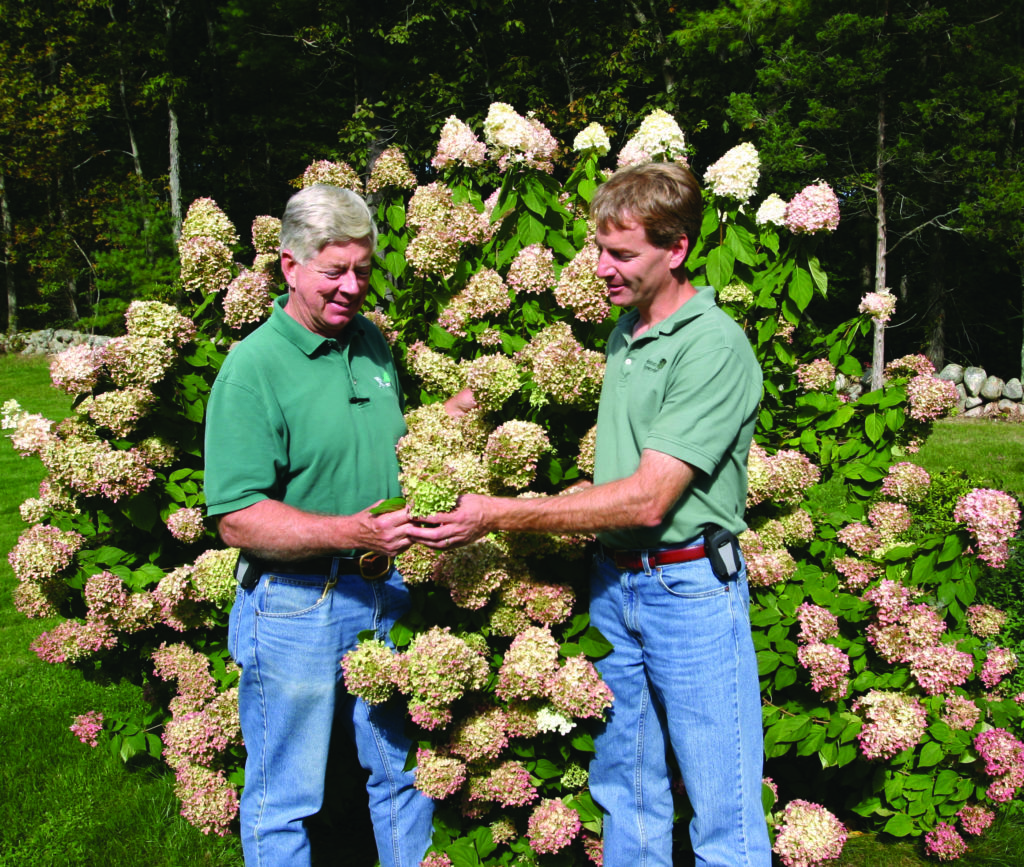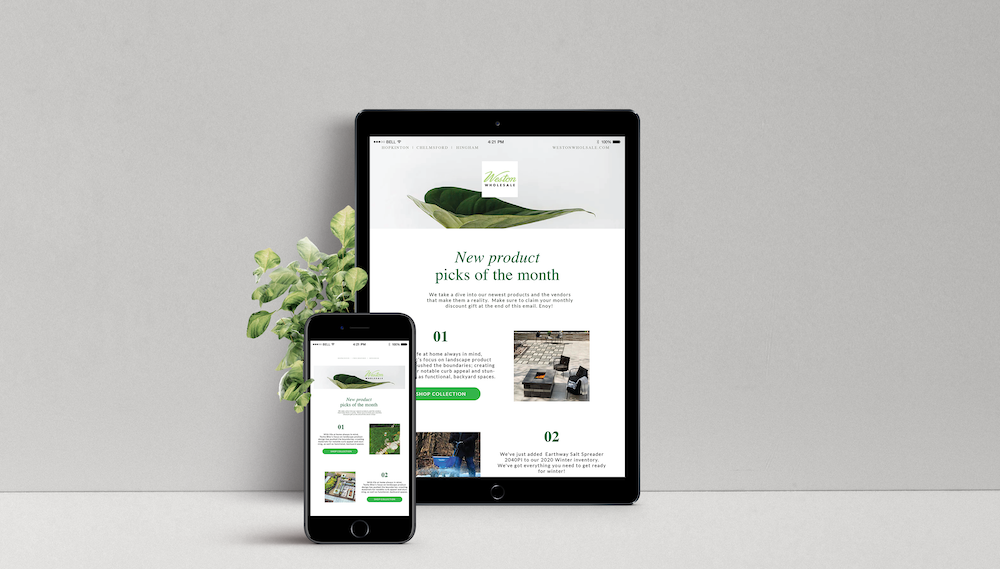By Barbara Stafinki, MCH, Weston Nurseries of Hopkinton
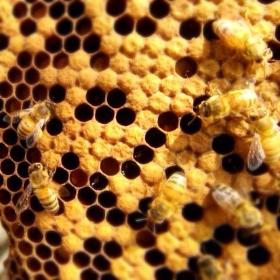
This is such an exciting time of year to have honeybees! Both of my beloved hives have made it through the winter and are growing and thriving.
The bees in my hives work together like a well-oiled machine, and everyone has a job. Some are out foraging for nectar and pollen and carrying it back to the hive to be used and stored. Others are building fresh combs; it’s amazing to watch them create perfect hexagonal structures, like tiny engineers maximizing their space.
I have two hives, with a Queen in each. Queen Emily presides over Hive #1 and Queen Lily reigns in Hive #2. Both are second-year Queens and are doing very well. When a Queen is born she goes on several mating flights with a group of male bees, which are called drones. She collects and stores the sperm so that she can later fertilize her eggs as she lays them, moving through the comb examining every cell, and then quickly depositing a new egg. She does most of her work in the Spring when temperatures begin to warm up, laying approximately 2,000 eggs each day for up to three years.
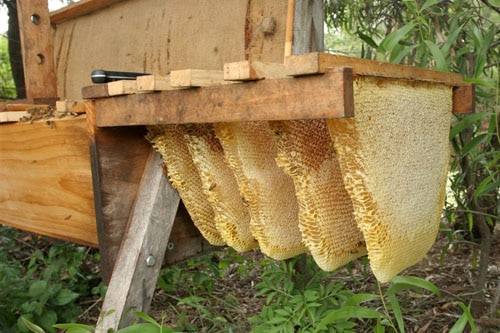
I don’t have the typical “langstroth” hives, instead I chose to use the top-bar hive style. In a top-bar hive there are no frames with a foundation. Instead there are hanging wooden bars from which the bees draw their comb using their wax glands. These are much easier to lift and maneuver, but the main benefit to this is that the wax is cleaner with fewer chemicals or contaminants. Another benefit is that the bees are not constricted by an artificially constructed space, and can build the perfect size cells, creating a strong foundation that makes their comb more disease, mite, and pest resistant.
When harvesting honey from my top bar hive I literally crush the wax with gloved hands to extract the honey. Yes, this means that the bees have to rebuild the comb again, but the construction of fresh clean comb also prevents the spread of disease.
The truth about beekeeping, like gardening, is that if you ask 10 different beekeepers the same question you’ll get 11 different answers. There’s no one correct way to do this as long as the bees are happy and healthy. It’s always a learning experience and it’s so much fun to to come up with creative new ways to care for bees!
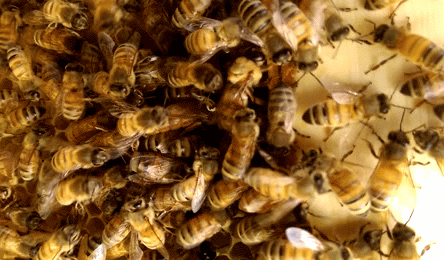
Queen Emily (with the oval marking) lays eggs among her devoted subjects.


